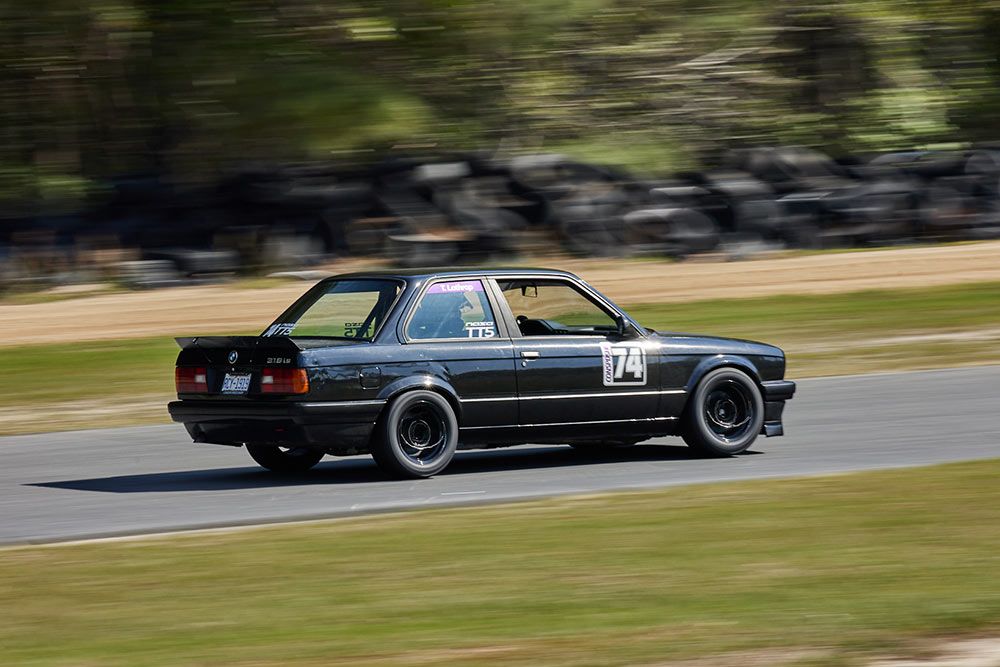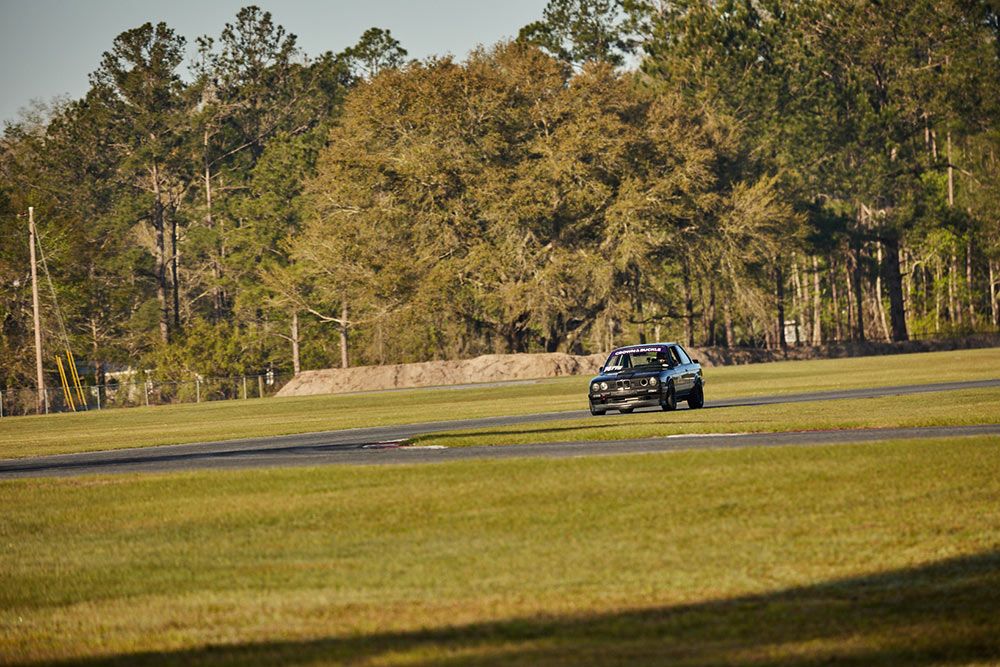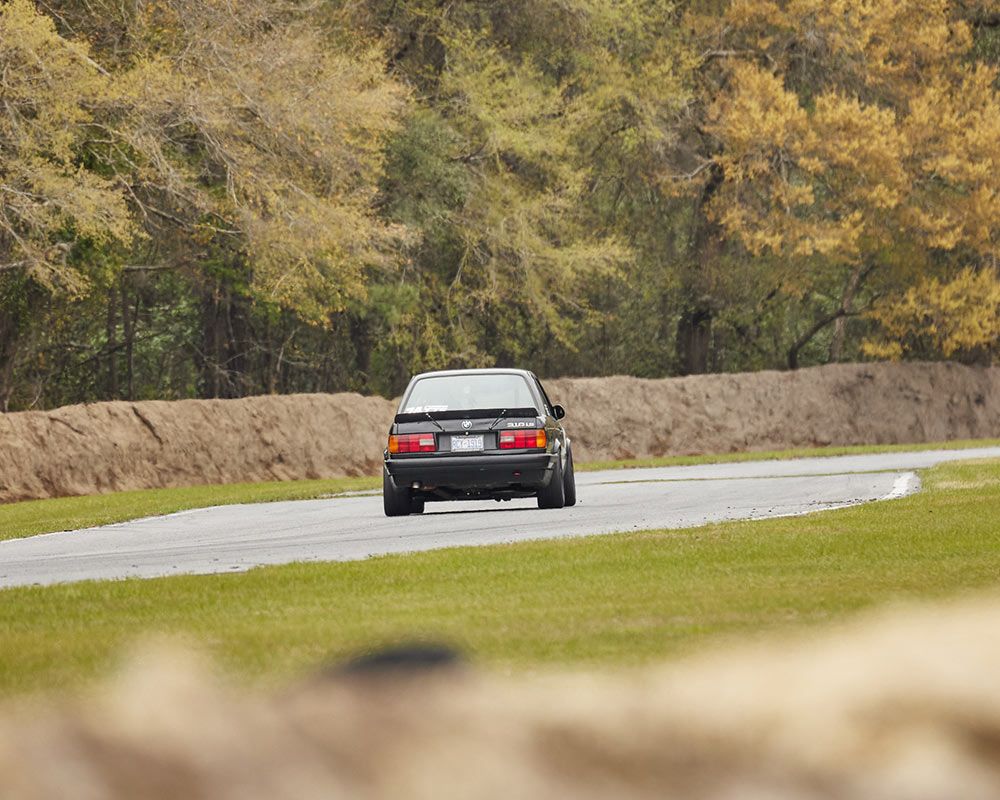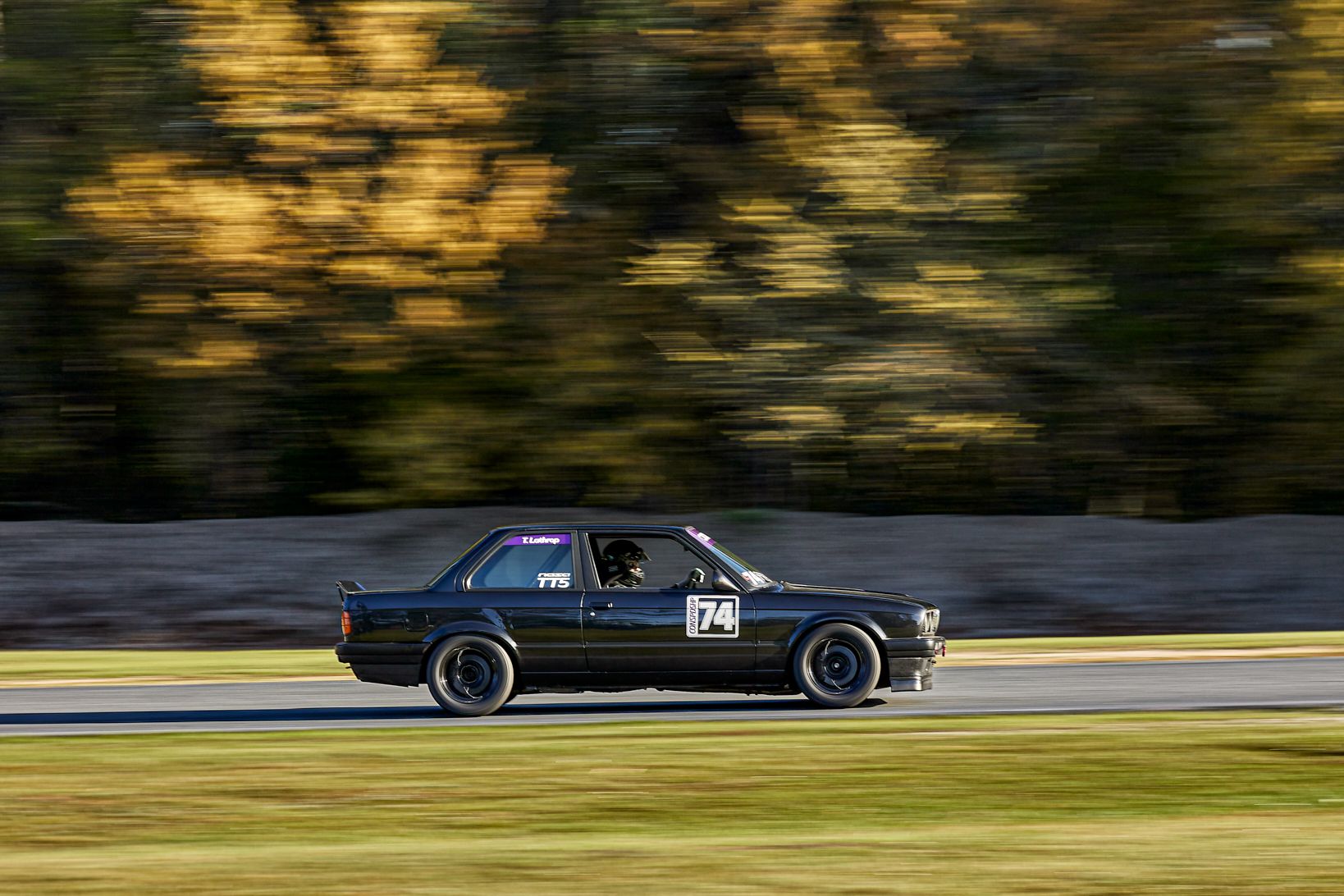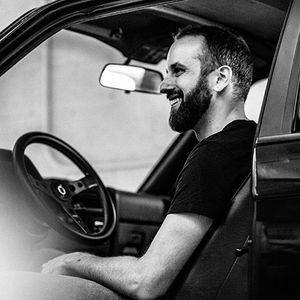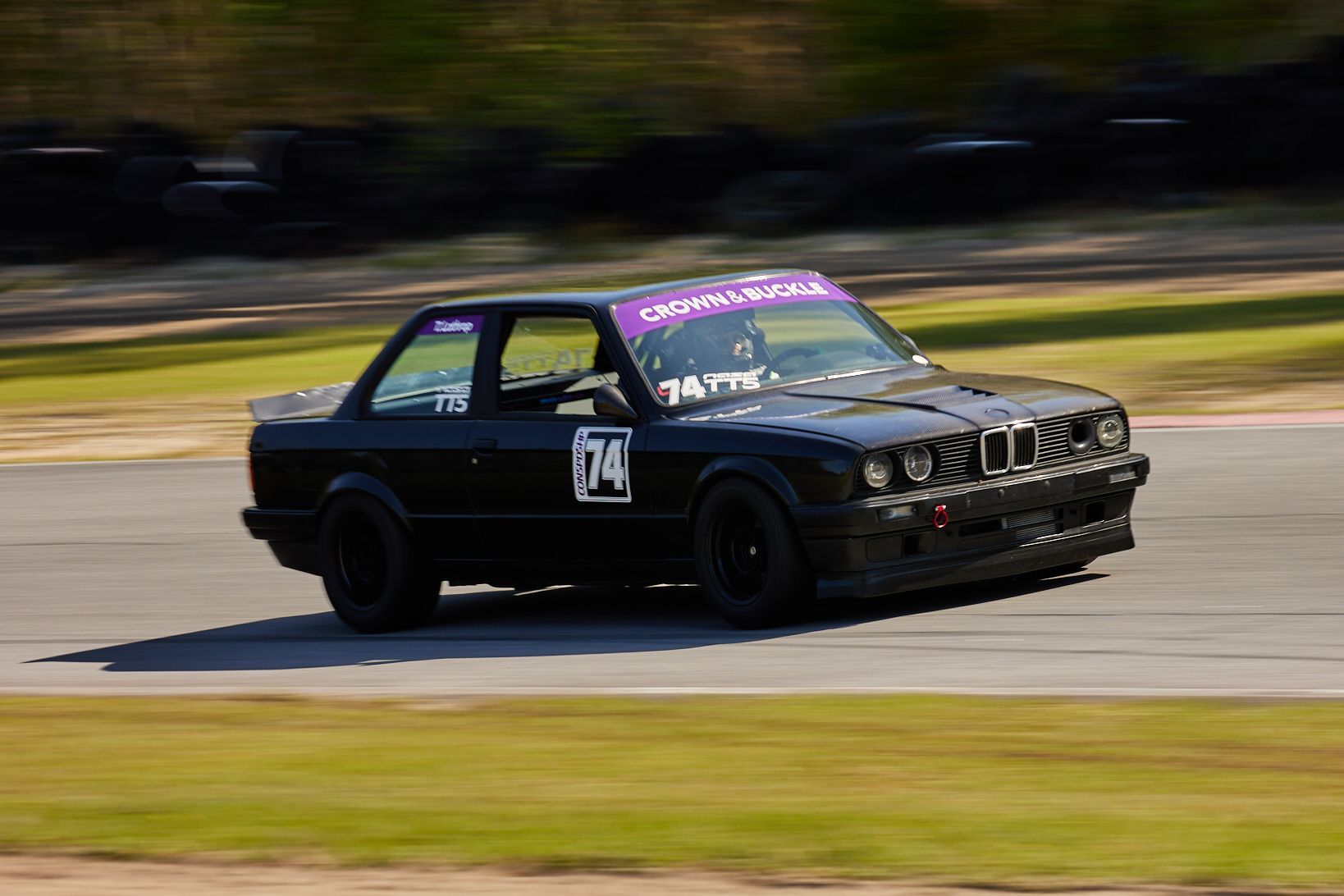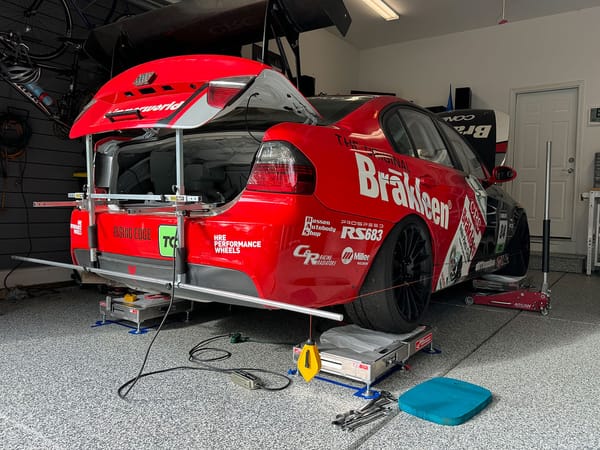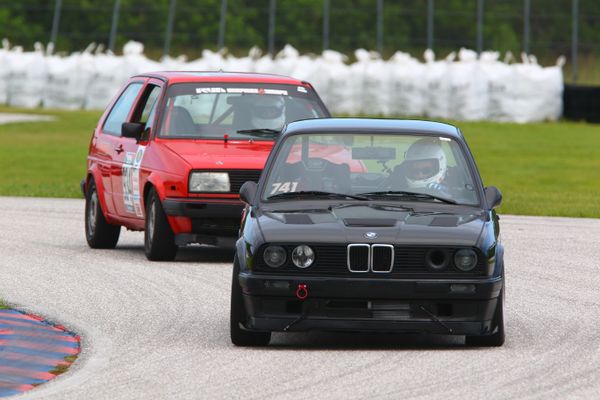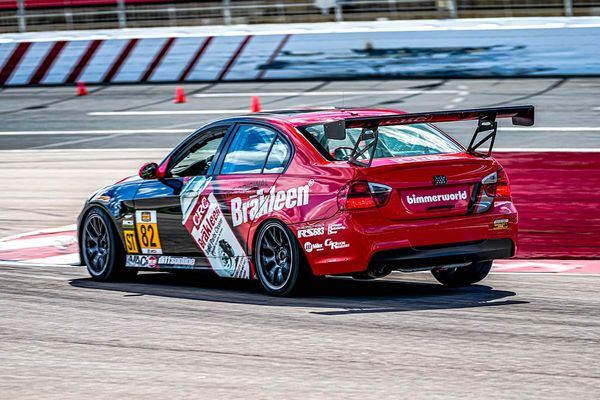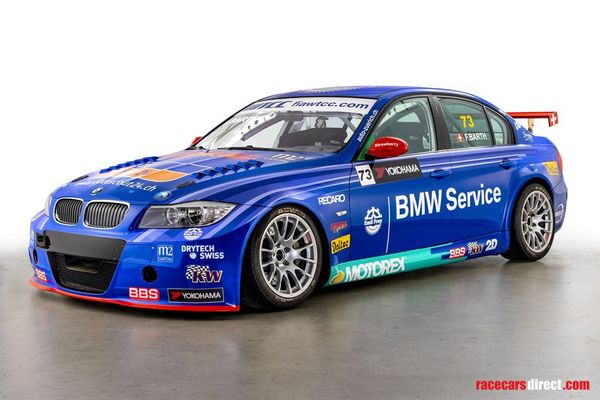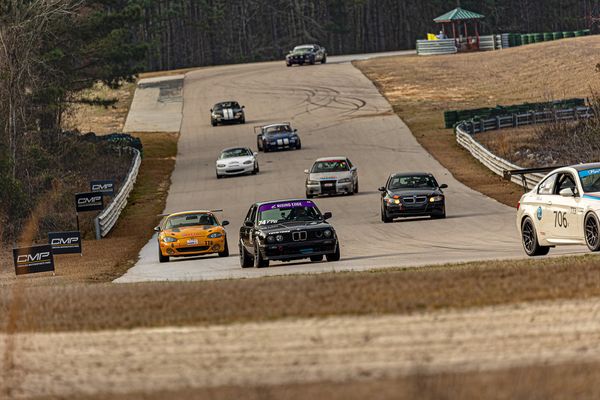Over the years, my track experience has mostly been relegated to the E30 chassis; up until recently, the only other platforms I had driven hard were an E36 on track and a GR WRX at autocross. While the E36 featured some very notable improvements in suspension design and chassis dynamics over the E30, it had a recognizable driving experience coming from an E30. The WRX had a very modern setup featuring a double-wishbone rear end, plus excellent chassis rigidity. However, being AWD and only having used it in autocross with crappy tires meant I didn't get a very good impression of the overall "feel" of that car.
Around the end of 2020, several friends began talking about creating a new "spec" class for modern BMWs. The goal was to get away from the ever-rising prices and ever-shrinking parts availability of Spec E30, a platform that is nearly 4 decades old. E36's (Spec3) have the same price & availability issues as the E30. E46's (Spec E46) are a good platform, but the adoption has been limited outside of the Mid-Atlantic/Southeast regions, and the build cost is quite high. F8X/G8X chassis cars are still too new and expensive for club racing. Remaining was the E90/E92 platform, which was seemingly near the bottom of the depreciation curve, and had the bonus of ample junkyard availability. Jackpot: Spec E9X was created.
Three-time NASA National Champion and Condor Speed Shop owner Carlos Mendez was heading up the new Spec E9X class. Curtis Buxton and I were tapped to help out with the class rulebook and the development of the #14 Condor Spec E9X chassis. The #14 car has been on track in many iterations over the last 16 months, testing different parts, suspensions, and chassis setups. I've been lucky enough to drive the car pretty extensively along the way, including in it's current and near-final form. Carlos handily won the 2021 ST5 national title in this car while using box-stock KW V3 street coilovers, and the car has only gotten better since then, now on it's new shaker-rig developed Öhlins Spec E9X custom coilover setup.
Allow me to cut to the chase and say that the #14 Condor Spec E9X drives like a dream. So much so that it actually had me feeling down on my lowly E30. Back in 2020, I had made some large changes to my car. I had spent the previous 4 years driving on the tried-and-true H&R Race/Bilstein Sport suspension combination paired with 200tw street tires. It was a safe and predictable setup that allowed me to progress as a driver, but it did come with some limitations that I was ready to exceed. In the off-season between 2019 and 2020, I switched over to a BMW Motorsport Group N coilover system. At the same time, I moved from 16" to 17" wheels (due to tire selection), switched to Hoosier R7 DOT racing slicks, and added some mild aerodynamic pieces to the car (a small splitter, rear spoiler, and hood vents).
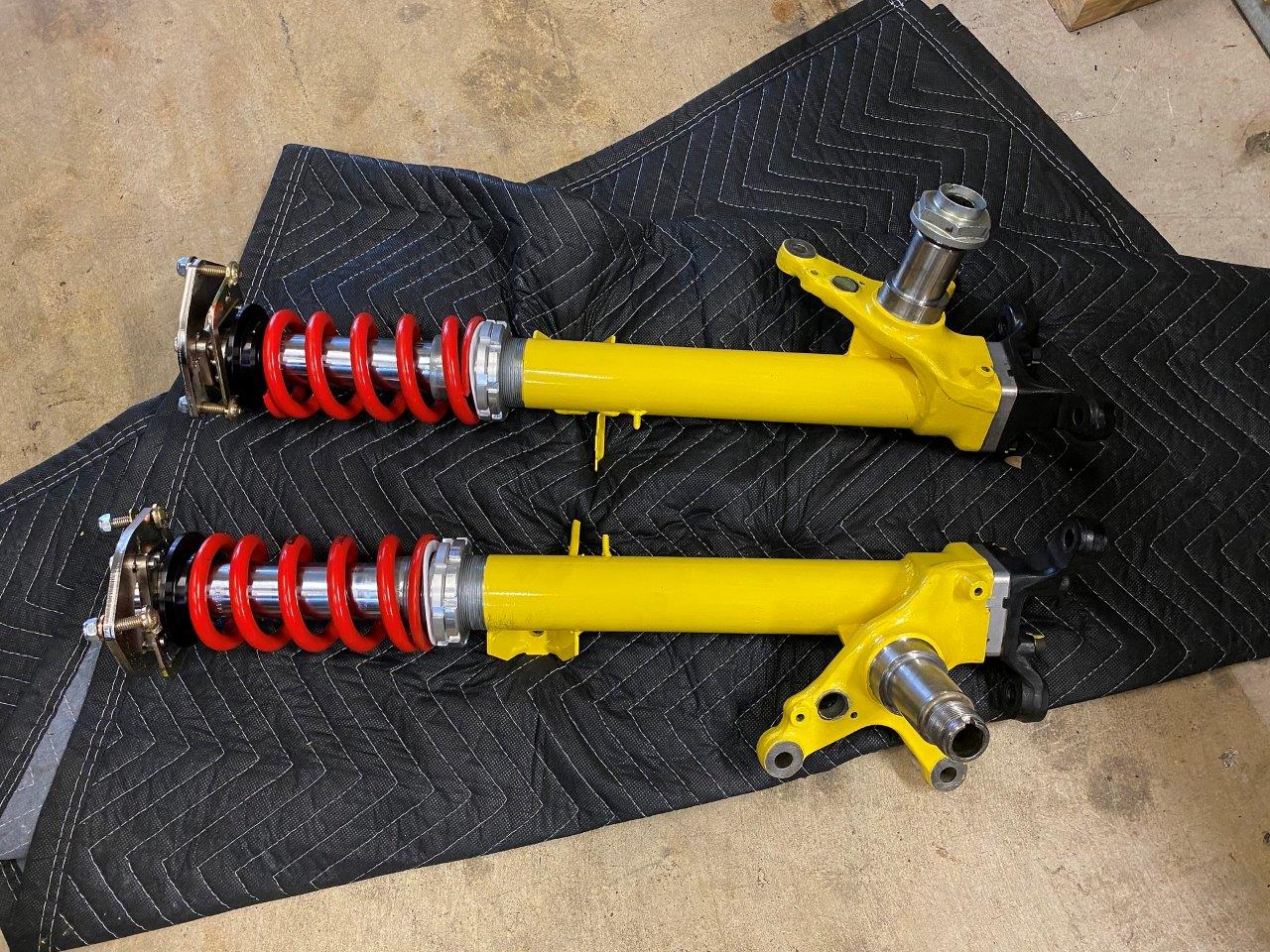
These were big changes, and the results were immediate. Even if only because of the Hoosier R7 tires, I improved on all of my best times that season. However, the new setup was very stiff and "on edge," requiring a delicate hand to drive. This new setup felt so different that it took over a year for me to feel comfortable getting near the limit. And then another 6 months later, I lost it at Sebring, resulting in my first crash. Thankfully the damage to the car was mostly cosmetic, and more importantly I was completely fine, minus a bruised ego. It hadn't yet dawned on me that my E30 had been poorly set up the whole time.
Just a few months after my crash was my first experience driving the then-infant Spec E9X pilot car. The first drive certainly left an impression on me, even though the car still had a long way to go on the development front. The potential was there, and I could tell that I was way more comfortable driving that car than I ever was in my own. My E30 was simply too on edge to be driven with full confidence.
This is how I would describe driving the Spec E9X, at least in comparison to my #74 E30.
- Comfortable
- Confident
- Predictable
- Forgiving
- Fun!
Certainly some of it's nature is due to the massive advances in technology that the E9X platform features, such as the super-stiff chassis, multi-link front and rear suspensions, modern ABS system, superb Öhlins digressive dampers, and the flat power curve the comes from a myriad of modern engine technologies.
Nevertheless, I set out to make my E30 feel more like an E90 on the track... if it was at all possible.
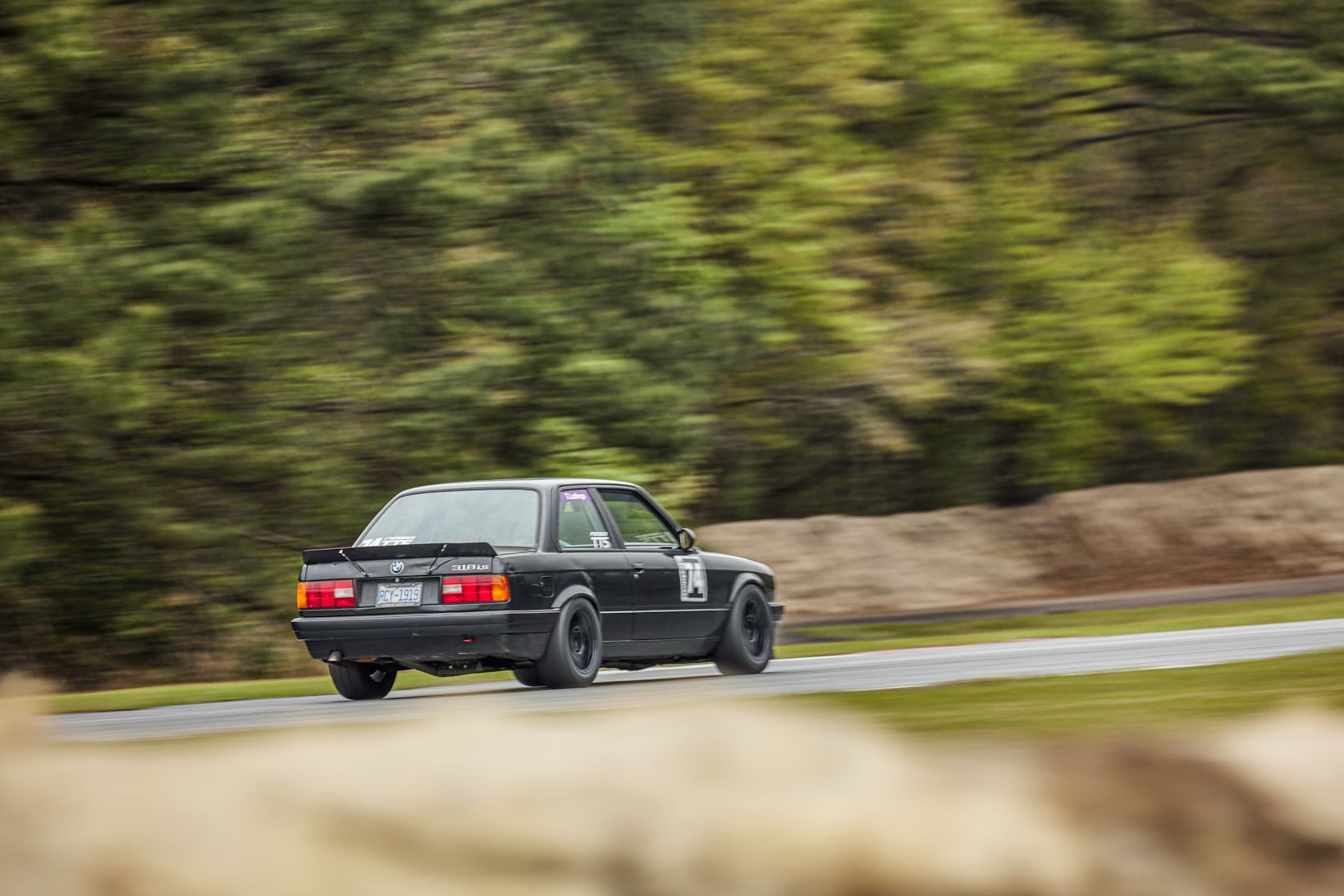
I really don't know how I got it in my head that the E30 was an understeer prone platform; perhaps it was from my early years autocrossing on whatever junk all-season tires I had on my bottlecaps. In any case, my misguided belief resulted in me building a car that was quite the opposite in nature. My E30's tendency to oversteer never really posed a problem starting out, because I rarely drove the car hard enough to induce it. However, as I progressed as a driver and began to push the car more, I realized how oversteer prone the car really was. Prior to driving the E90 but after installing the new Group N coilovers, I had really only done 3 things to try and tame the car down:
- Disconnected the rear sway bar
- Installed a higher lock, 3 clutch diff (induces some push at turn in, makes the car more predictable on power)
- Installed an E32 brake master cylinder to move brake bias forwards
I drove the car in this manner for over a year, and while the potential of the car was huge if you could absolutely nail a lap, it was hard to drive consistently and it was not at all confidence inspiring. I drove the car white-knuckled at all times, which I believe eventually contributed to my accident at Sebring. The car was extremely responsive: it would go anywhere you pointed it, with a ton of grip from the Hoosiers, but when you exceeded the limit, there was really no going back. That was partially due to the Hoosier tires themselves, which at their limit let go abruptly, and with very little warning beforehand.
Both my E30 and the Spec E9X slot into NASA's TT5 class. In terms of outright pace, in 2020 I ran a 2:32.20 at Sebring in my E30. Thus far my best time in the Spec E9X is a 2:31.74 (the current TT5 record, April '22), so only about half a second faster. However, the difference in ease of achieving those lap times was drastic. In the E30 the driving effort was as intense as taking a college entrance exam. In the E90, it was more like taking a BuzzFeed quiz.
To try and capture some of the E9X goodness, I started a new round of changes to my E30 in the fall of 2021. Since then, over about an 8 month period, I've cumulatively made the following changes (in order; over multiple events):
Suspension / Setup / Tires
- Decreased the rear spring rate by 100# (950 -> 850)
- Reduced front camber by 0.7° (4.2 -> 3.5)
- Reduced front toe (1/16" toe-out -> 1/32" toe-in)
- Removed front splitter
- Changed from 17" wheels/tires to 15" (225/40-17 -> 225/50-15)
- Changed from Hoosier R7 to Toyo RR
Ergonomics / Comfort
- Lowered my seating position
- Raised the steering wheel position
- Switched to a suede steering wheel for better grip w/ gloves
- Installed a drink bottle in the car
Let's dig into some of these details for a minute. You may have noticed that I made several setup changes to the front of the car, but shouldn't I have changed the rear of the car, since the rear end was loose in many scenarios? Well, for better or worse I had made the decision while building the car to forgo any rear subframe/trailing arm adjustments, leaving me with only spring rate, ride height, and sway bar tuning for the rear. The sway bar is long gone (I think an E30 drives better without it), so I didn't have any choice but to tame the front end, instead of preferably increasing the rear end grip. If the car had rear alignment adjustments, one of the first things I would have tried was increasing rear camber. I only had -2.4° camber in the rear, which was not a good match to the -4.2° I was running in the front. Macpherson strut cars, especially the E30, seem to do well with a lot of front camber, but I simply could not match the rear grip to the front.
The rear spring rate change was the first change I had made, and it was step in the right direction. The change to 15" wheels came at the advice of Carlos. He was concerned that the tiny (and super stiff) sidewalls of the 225/40 Hoosiers were not offering any compliance, exacerbated by the stiff suspension setup. In an ideal world, I would run 16" wheels on an E30, as I feel they are the best compromise between form and function, but the tire choices are slim these days. I had previously been reluctant to change to 15's, because it required removing the roll center / bump steer spacers that I had. I considered them to be an important part of the equation when running at lowered ride heights, but I went ahead and removed them so I could see what the 15's were all about.
Changing to 15" wheels/tires had the added benefit of significant rotational and unsprung weight reduction: almost 14.7 pounds in total. Even though I was running lightweight forged 17" wheels, the 15" cast wheels were still 3lbs lighter per corner, plus I saved an additional 2.7lbs by not having to run the large wheel spacers that I had with the 17's. The sidewall difference in the tires was easily noticeable; 3.5" versus 4.5".
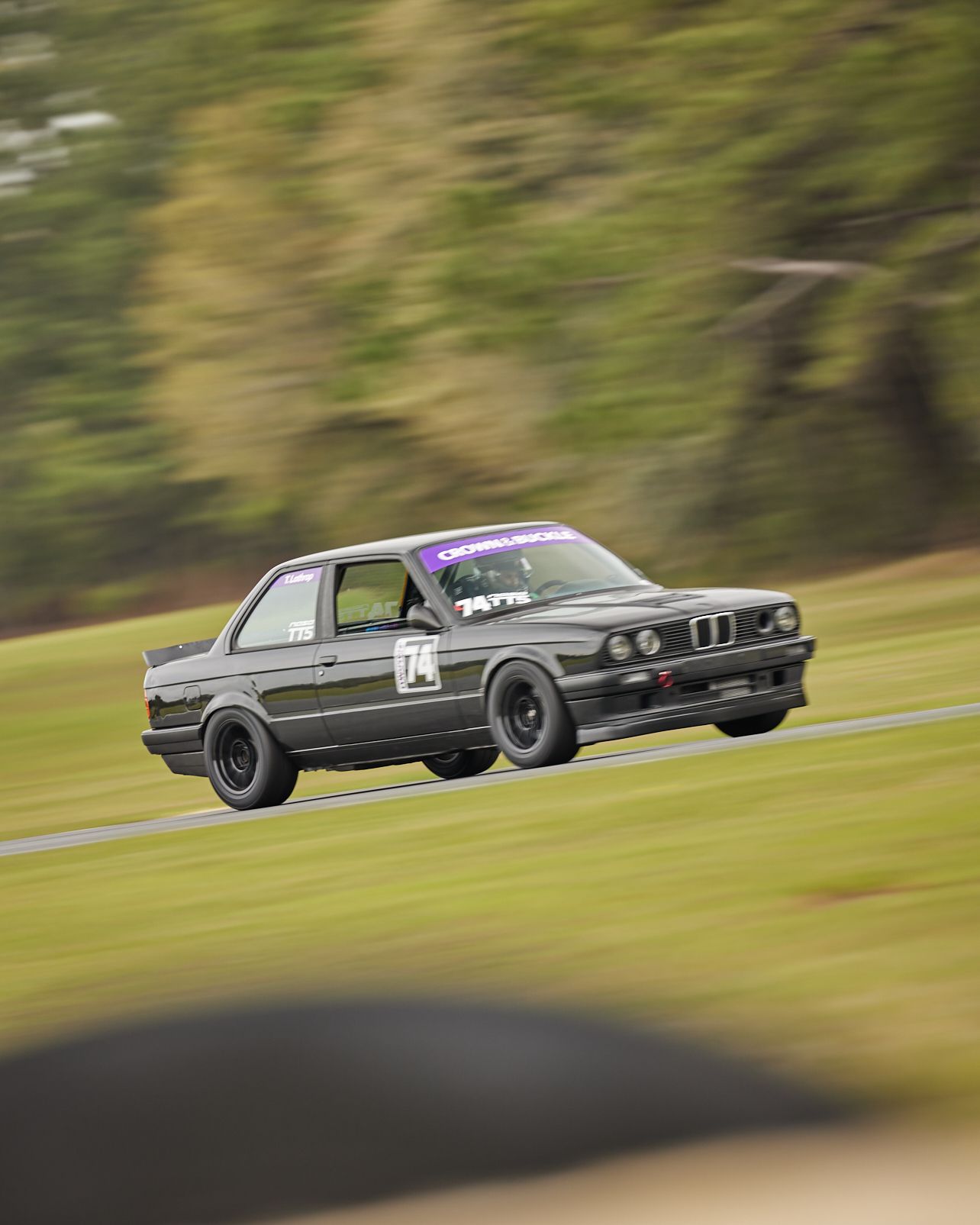
The change from Hoosier R7 to Toyo RR tires was unintentional. While I was previously running 225 width Hoosiers without issue, the new wheels I bought were lower offset and the 15" Hoosier sidewall/shoulder profile is much more bulky than that of the 17's. This meant that as soon as I set the car down with the 15" Hoosiers, the fender was basically sitting on the tire. Since I'm not willing to modify the fenders on this car any more than they already are, that wasn't going to work.
Running on Toyo RR tires hasn't been a bad thing, though. It's the same tire as used for Spec E9X, and I kind of like it. First of all, they are more than 30% cheaper than the Hoosiers. Second, they last longer overall, and are more consistent over their lifespan. Finally, they offer quite a bit more feedback than the Hoosiers do. They are louder at the limit (though not as loud as a street tire), and they also seem to have a more forgiving and more progressive break-away at the limit than the Hoosiers do. I find them easier, and in some ways more fun to drive on than the Hoosiers, even though they are clearly slower tires with far less mechanical grip. Since my car can still easily class into TT5 with Hoosiers, I do intend to try 15" R7 tires on my car at some point; maybe with higher offset wheels or in the 205 width.
The cumulative changes have been tested at three tracks to date: Roebling Road, Road Atlanta, and Charlotte Motor Speedway. I'm happy to report that the changes have truly paid off. The #74 E30 is more neutral, more forgiving, and simply more pleasurable to drive than it ever has been in the past. The increase in compliance from the 15" tires is very noticeable and welcome. I'm now nearly as comfortable driving my E30 as I am in the Spec E9X. I can even notice my increased comfort when reviewing my track videos. While the changes have admittedly lowered the maximum potential / outright pace of the car (especially on the RR's), I feel safer out there, and I have more fun throughout a session. Right now, that matters more to me than trying to be competitive in a car that I am outclassed with, anyways.
At the time of writing, I'm the Sebring TT5 track record holder, but I achieved it in the #14 Spec E9X. With a little more time, practice, and dialing in, I hope to re-set the record in my #74 E30, and to do it with relative ease.
